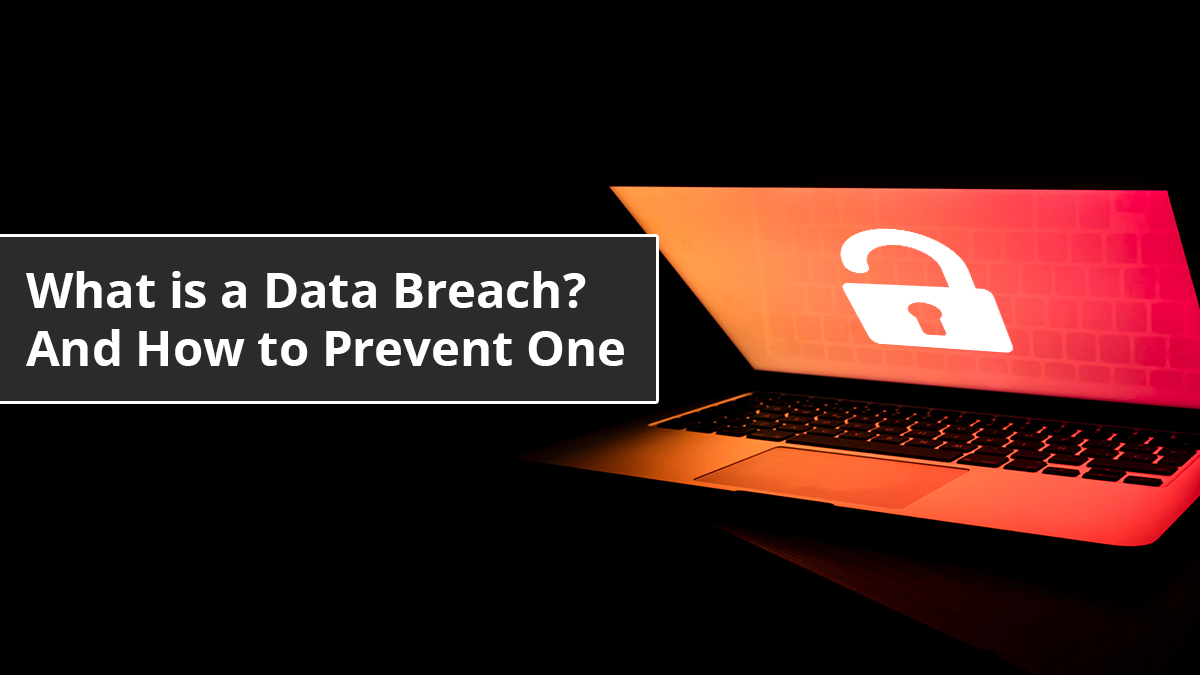Data breaches are more than just temporary mistakes. Most of the time, they lead to permanent damages–possibly changing the course of the entire enterprise. From businesses, government offices, and even normal individuals, anyone is prone to these breaches. In the aftermath, victims can experience massive issues after having their sensitive information exposed. It doesn’t matter whether you’re doing your businesses online or offline, today’s cybercriminals are far more advanced than you think––possessing the abilities to get through your information through the internet, messages, e-mails, and other services you’re using.
Once you bat an eye someplace else, this small vulnerability has proven to cause massive data breaches in the past. Without the willingness to pay attention to detail, many people are uninformed about how these security threats operate. For the price of personal data, which is deemed to be the world’s most valuable resource, preventing data breaches is necessary—especially now that there’s a monetary value to data.
In this article, we’ll be explaining the basics of data breaches and how these threats can damage you and your businesses. As we go further up the scale, you’ll finally get your answers to some questions that may linger around your head about data breaches:
- What is a data breach?
- What are the types of data breaches?
- How do data breaches occur?
- How can you prevent a data breach?
What is a Data Breach?

No one is safe from the risk of a data breach—even if it involves the biggest of enterprises or governments, or maybe even a combination of both. In general, these data breaches are made possible because of weaknesses and gaps in technology and how people behave—especially online. In today’s age of technology, computers and devices are swiftly being engineered with even more connective features. As a result, more avenues for data to “slip through” are created. Everyone loves these advancements in technology, though, but they are being produced faster than we can safeguard them.
A data breach doesn’t only have the ability to weaken businesses in painstaking ways, but it is also a very costly expense that can permanently damage the lives and reputations of many people. Not to mention that it takes a very long time to repair. Sadly, it shouldn’t be all that surprising to see data breaches come up in the news as more and more information each year is being moved and stored into digital clouds and other forms of file storage.
Types of Data Breaches
1. Physical Breach

- Laptops and Desktops
- Hard drives
- Physical assets that possibly contain sensitive data such as card and cardholder data, bills, faxes, blank checks, etc.
- Equipment that possibly contains sensitive data card and cardholder data, bills, faxes, blank checks, etc.
2. Electronic Breach
This is where things get a little interesting as here is the focal point of the article. Electronic data breaches involve unauthorized access, or even deliberate attacks, on a network where sensitive data are stored, processed, and/or transferred. Typically, an electronic breach occurs because of the cracks in cybersecurity. It could easily take the form of access via web servers or taking advantage of the system’s vulnerabilities through a wide array of cyberattacks.
How do Data Breaches occur?
Before answering the question of how do these data breaches happen, it’s important to know why these data breaches occur, too. To be frank, this type of cybercrime is as profitable as profitable can get. Industries that continue to grow are perfect targets for these breaches as hackers look for as much personally identifiable information to rob money, tamper with identities, or even go as far as selling these pieces of information on the dark web.
It isn’t a surprise that data breaches occur in many different situations—some even accidentally. However, if there is a clear intent to target the attacks, then data breaches can occur in these specific ways:
- Taking advantage of a system’s weaknesses
- Brute force attacks
- Malware attacks (Phishing, Spam, and Ill-natured Downloads)
1. Taking advantage of a system’s weaknesses
No one system is perfect, that’s a given. This is also the small beam of light cybercriminals hold on to. An operating system, software, hardware, or the servers you are connected to are highly susceptible to flaws. These small gaps in protection are what make electronic data breaching possible. Typically, this is done in an undetected fashion through spyware and, if done clean enough, the chances of finding these infections is slim, none, or all too late.
2. Brute force attacks
Talking about clean, undetected approaches, brute force attacks are obviously brasher. Normally, this is done by working with all the possibilities of a password until they are able to guess it correctly. As a price, though, this method of data breaching takes time but with evolving computer speeds, brute force might just be as dangerous as the timid methods. If your password is weak, then it might only take a few moments of your time before these cybercriminals get into your network.
These attacks aren’t limited to just guessing passwords, but hackers also have the ability to record keystrokes—most commonly known as keylogging. This is a way for attackers to record whatever you’re typing into your computer and this information is transported to the hackers.
3. Malware attacks (Phishing, Spam, and Ill-natured Downloads)
Spam and phishing email tactics have been around long enough to not fool a substantial amount of people. However, that’s a bit too optimistic in the world of cybercrime and struggling cybersecurity. Attackers use these tactics to trick users into revealing their credentials, downloading virus-dominant attachments, and directing them into sketchy websites. Because of the majority of people’s nature of work and working conditions, the use of emails has been a powerful weapon to communicate with each other regarding business. For hackers, this is another avenue for malware to end up on your computer.
How to Prevent a Data Breach in 2021
Thankfully, there are many different ways you can protect sensitive information. Using but one, however, isn’t advisable as these are supposed to be used in combination with each other. Preventing a data breach isn’t as stressful as you think it is. In fact, it always goes back to the basics of cybersecurity—solidifying the basics even more.
Here are 10 ways to prevent or, just in case, mitigate the effect of a data breach.
1. Using strong and secure passwords
It goes without saying. Using a complex, unique password as your first line of defense is a great way to prevent brute force attacks. You should get in the habit of changing your passwords at least once every few months.
2. Utilize anti-virus and anti-malware software
You don’t have to do it alone. There is plenty of trusted software out there to help you fend off these threats and protect you from viruses and malware. See our list of suggested software.
3. Use a secure file sharing solution
If you regularly send and receive confidential information, you should adopt a secure file-sharing platform like TitanFile. TitanFile encrypts files so that they can only be accessed by the sender and intended recipients. The information is stored on a secure cloud infrastructure. Get a free 15-day trial.
4. Do not open malicious emails
To prevent yourself from becoming a victim of phishing and spam emails, know that not every email on that folder is safe—especially the ones that look the most tempting.
5. Identify secure URLs before you click them
Before clicking on a link in your email or otherwise, check to see that the link points to a website containing “https://” in its URL. These websites use the SSL/TLS protocol to encrypt communication on the page so that hackers can’t steal your data.
6. Be careful about what you share on social media
It’s true. Social media plays a huge role in community-building. It’s also a platform where people share just about anything they can–so avoid accidentally sharing confidential information. If you share something you shouldn’t have, there’s a good chance it’ll be on the internet forever.
7. Religiously monitor your accounts
This goes for any of your accounts—may it be your banks, work emails, or social media. If these companies offer alerts via text, emails, or apps, then this mitigates the risk of unfamiliar activities.
9. Take action
As soon as possible, take action. If there’s a hunch of any suspicious activities on your accounts, contact your service providers for help. In this world of evolving cybercrime and attacks, there’s no such thing as “secure enough.”

